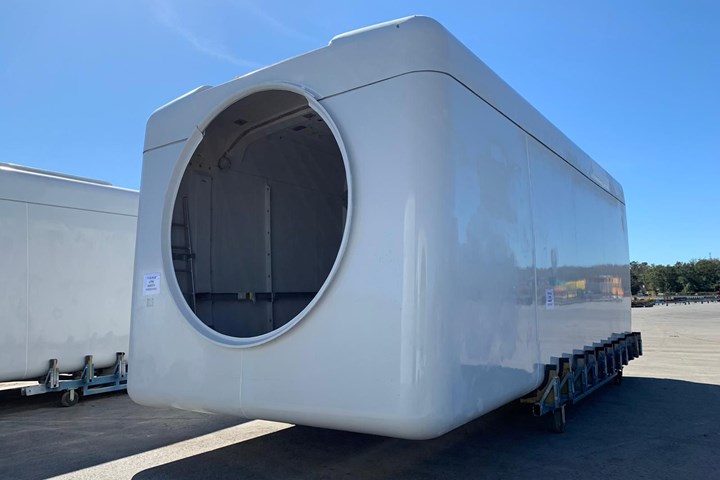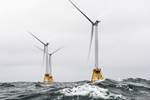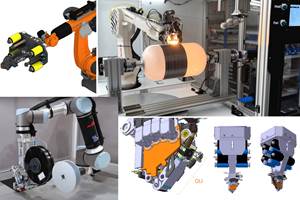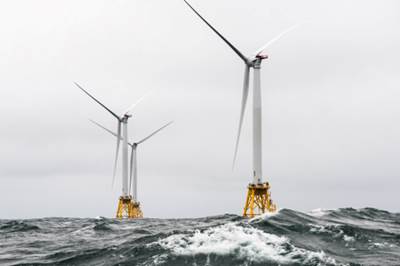Brazilian-founded Blue Wind supplies more than 900 composite nacelles to U.S. wind energy market
The Florida-based manufacturer began its nacelle exporting operations during the pandemic. Now, supporting GE Renewable Energy, Blue Wind strives to surpass the mark of 500 nacelles in 2022.

Composite nacelle. Photo Credit: Blue Wind
Composites manufacturer (Pensacola, Fla., U.S.) strives to become a global reference for the production of wind power components. While the company typically imports nacelle technology from Brazil through international strategic partners, the company has reversed the traditional flow of its commercial relations through the export of a production system to the U.S. instead. This, says Blue Wind, has qualified it as one of three local suppliers of nacelles to GE Renewable Energy (Paris, France), an unit of General Electric (GE, Boston, Mass., U.S.) dedicated to the manufacture of wind turbines.
In Brazil, Blue Wind’s directors have accumulated more than twenty years of experience in manufacturing composite materials used in producing nacelles, compartments that accommodate wind turbine generators. “We learned of a large demand for nacelles from GE in the U.S., a company that we already served in Brazil. So, in 90 days, we set up the factory in Pensacola from scratch,” recalls Jean Zolet, executive director of Blue Wind. The unit’s doors were opened in August 2019, and the first pieces were produced the week of Christmas that same year.
The first complete set of nacelle — part of GE's model 2X turbine — was delivered by Blue Wind on January 23, 2020, the year in which the company produced 343 sets.
“We showed GE that our technology makes it possible to manufacture ten nacelles a week with just one mold, when other manufacturers need two. We also guarantee that our mold will have a lifespan of 1,000 pieces, against the competition’s 500 pieces. All of this, of course, directly impacts the cost of the project,” says Zolet.
Measuring 10 meters long x 4 meters wide x 4 meter high, the nacelles supplied to GE are molded by Blue Wind through an infusion process.
Shortly after the start of the operation and while it was still recruiting local and Brazilian labor — today there are 127 direct jobs — Blue Wind was confronted by the challenges of the pandemic. “We went through a lot of difficulties. Brazilian employees who helped us transfer technology had to quarantine every time they arrived in the U.S. And local employees were also greatly impacted by the health crisis,” says Zolet.
Regarding the North American employees, Zolet pointed out that Blue Wind operation was only able to stand — and still remains today — thanks to the commitment that everyone has shown to the company. “We are so grateful to have found such talented and dedicated people,” he reflects. “They were and continue to be key to Blue Wind's success.”
Despite the pandemic, the delivery of nacelles continued to be carried out and Blue Wind operation began to gain traction. So much so, says Blue Wind, that the contract with GE was renewed in 2021, the year in which the company produced 471 more sets. For 2022, the goal is to surpass the mark of 500 nacelles.
Moreover, in addition to expanding the supply of components to GE and starting partnerships with other wind turbine manufacturers, Blue Wind intends to expand its scope of action to different markets in 2022. The move will be supported not only by infusion, but also by other composite molding technologies.
Related Content
The next evolution in AFP
Automated fiber placement develops into more compact, flexible, modular and digitized systems with multi-material and process capabilities.
Read MoreCarbon fiber, bionic design achieve peak performance in race-ready production vehicle
Porsche worked with Action Composites to design and manufacture an innovative carbon fiber safety cage option to lightweight one of its series race vehicles, built in a one-shot compression molding process.
Read MorePlant tour: Airbus, Illescas, Spain
Airbus’ Illescas facility, featuring highly automated composites processes for the A350 lower wing cover and one-piece Section 19 fuselage barrels, works toward production ramp-ups and next-generation aircraft.
Read MoreCarbon fiber composite pallet revolutionizes freight industry
LOG Point Pallet fuses advanced materials with innovative design and manufacturing to improve supply chains worldwide.
Read MoreRead Next
U.S. sets offshore energy records with $4.37 billion in winning bids for wind sale
The New York Bight offshore wind sale offered six lease areas totaling more than 488,000 acres won by six bidding companies. Up to seven more potential lease sales have been identified for later this year.
Read MoreUltrasonic welding for in-space manufacturing of CFRTP
Agile Ultrasonics and NASA trial robotic-compatible carbon fiber-reinforced thermoplastic ultrasonic welding technology for space structures.
Read MoreCutting 100 pounds, certification time for the X-59 nose cone
Swift Engineering used HyperX software to remove 100 pounds from 38-foot graphite/epoxy cored nose cone for X-59 supersonic aircraft.
Read More












